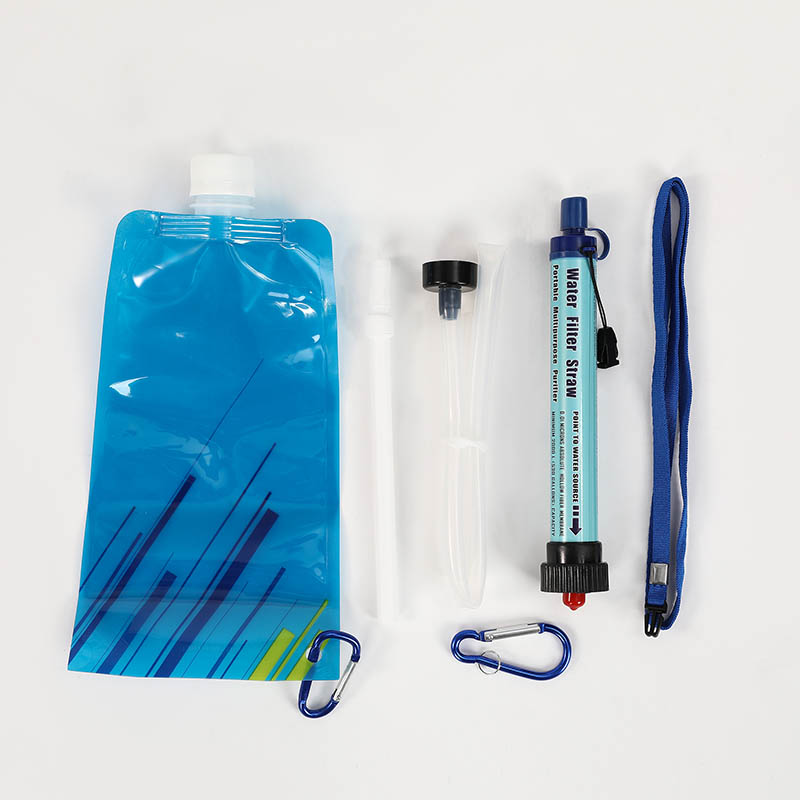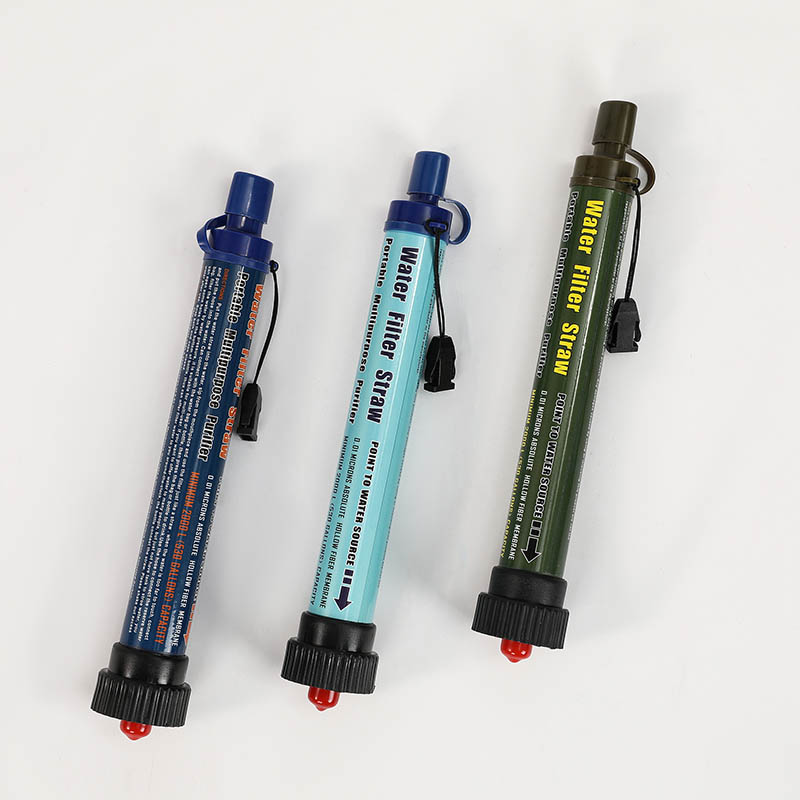Introduction to the Four Common Viruses in Water
1、 Enterovirus
Enterovirus belongs to the family Picomaviridae, which includes poliovirus, Coxsackie vims A, Coxsackie virus B, and Enteric Cytopathic Human Orphan virus (ECHO virus). Enteroviruses are the most common and widely studied viruses in aquatic environments. In the study of the virological safety of water, enteroviruses are often used as a representative, because patients with this type of viral disease have a large amount of detoxification, a long time of detoxification, a strong resistance to the external environment, and a long survival time. They can be transmitted through channels other than water, and are easier to detect than other viruses.
Enteroviruses have the following common characteristics: ① The viral body is spherical in shape, with a three-dimensional symmetry of the 20-sided capsid, a diameter of 22 to 39 nm, and no envelope; ② The nucleic acid is a single strand positive stranded RNA; ③ Enteroviruses are resistant to ether and acid (pH 3 to 5), and have resistance to bile and common disinfectants such as 70% alcohol and 5% lysol; It is sensitive to oxidants such as 1% potassium permanganate, 1% hydrogen peroxide, and chlorine containing disinfectants. In addition, it is sensitive to high temperature, drying, ultraviolet rays, etc., and can inactivate the virus at 56 ℃ for 30 minutes. The virus can survive for several months in feces and sewage; ④ Both can proliferate in the intestinal tract, and can invade the blood to produce viremia, causing various clinical syndromes.
1. Poliovirus
This virus is a circular microvirus with a diameter of 8 to 30 nm, belonging to the enterovirus category. Polio is an acute infectious disease. "After infection, fever and limb pain often occur, with the main lesion in the nervous system. Therefore, some patients can cause paralysis, and severe cases can leave sequelae of paralysis.". This disease is commonly seen in children, so it is also known as polio.
The virus can be excreted from the nasal and pharyngeal secretions and feces of infected individuals. Food and water can be infected by feces, so oral ingestion is the main route of transmission. If the water source is polluted, it can contribute to a larger epidemic.
This virus has a strong ability to live outside the human body and can survive for several months in water and feces. It can be stored for a long time at low temperatures, but is sensitive to high temperatures and dryness. Both heating to 60 ℃ and ultraviolet irradiation can inactivate within 0.5~1h. Various chlorinating agents, 2% iodine, formaldehyde, and mercuric chloride can all have a certain disinfection effect. Disinfection with residual chlorine of 0.3 to 0.5 mg/L for 1 hour can inactivate the virus.
2. Other enteroviruses
In addition to poliovirus, enteroviruses also include coxsackie and Eko viruses, which are also widely spread in the world and mainly affect children. Generally, it is easy to catch on in summer and autumn. They all have the characteristics of temporary colonization of the human gut. These viruses are small, generally less than 30 nm in diameter, and have strong resistance to ether, 70% ethanol, and 5% kerosene soap, but are very sensitive to oxidants.
The clinical manifestations caused by these two viruses are complex and variable. The same type of virus can cause different symptoms, while different types of virus can cause similar clinical manifestations. The general symptoms include the following: aseptic meningitis, encephalitis; Acute myocarditis and pericarditis; Epidemic chest pain; Herpetic angina; Eruptive diseases; Respiratory tract infection; Infantile diarrhea, etc.
2、 Hepatitis virus
Viral hepatitis can generally be divided into hepatitis A (infectious hepatitis or short latency hepatitis) and hepatitis B (serum hepatitis or latency hepatitis), both of which have basically the same pathological changes and clinical manifestations. The main clinical symptoms include loss of appetite, nausea, epigastric discomfort (or pain in the liver region), and fatigue. Some patients have jaundice and fever, and most liver enlargement is accompanied by liver function damage.
Hepatitis A virus (HAV) is a small RNA virus that is significantly different in morphology from other members of the same family. In 1981, it was classified as enterovirus type 72. Recently, it has been classified into the Hepamavirus family due to its many different characteristics from enteroviruses.
Hepatitis A virus is mainly excreted from the body through feces and transmitted orally. Contamination of water or food can cause an explosive epidemic.
Hepatitis viruses have strong resistance to general chemical disinfectants and can survive for months or years in dry or frozen environments. Irradiation with ultraviolet light for 1 hour or cooking for more than 30 minutes can be inactivated. Chlorination disinfection has a certain inactivation effect.
3、 Rotavirus
Rotavirus is classified into the genus Rotavirus of the Reoviridae family. It was first discovered by Bishop of Australia in 1973 from duodenal epithelial cells of patients with diarrhea. The viral body of rotavirus is spherical in shape and has a double capsid, with each capsid forming an icosahedron. The shell particles of the underwear shell are arranged radially along the edge of the virus body, similar to wheel spokes. The size of the complete virus is about 70 to 75 nm, and the rough particles without outer capsid are 50 to 60 nm. The virus body with double capsid is infectious.
Rotavirus is one of the most common causes of acute diarrhea in children worldwide. It is estimated that more than 140 million children worldwide suffer from rotavirus gastroenteritis every year, causing hundreds of thousands of deaths. Its epidemic peak is mainly in autumn and winter, so it is often referred to as "autumn diarrhea"
Rotavirus has strong resistance to various physical and chemical factors, and can survive for days or months in feces. The virus was treated with ether, chloroform, repeated freezing and thawing, ultrasound, 37 ℃ for 1 hour, or room temperature (25 ℃) for 24 hours. Still infectious. The virus is acid and alkali resistant and has infectivity between pH 3.5. IO. o. 95% ethanol is the most effective for inactivating the virus, and heating at 56 ℃ for 30 minutes can also inactivate the virus.
Rotavirus is mainly transmitted through the oral fecal route, and can be transmitted by drinking or eating contaminated water or food, or contacting contaminated objects. The outbreak of rotavirus disease in Colorado in 1981 was related to the pollution of municipal water supplies. Since 1982, China has experienced several outbreaks of Group B rotavirus that have infected hundreds of people. The reason is that drinking water is polluted by sewage.
4、 SARS CoV
At the end of 2002, the first case of severe acute respiratory syndrome (SARS) was found in Guangdong Province, China. By June 2003, SARS had spread to 380 countries and regions, with a total incidence of over 8000 cases and over 800 deaths. "Patients with this disease usually have a fever above 38 degrees Celsius in the initial stage, accompanied by chills, or headaches, fatigue, and muscle pain. Later, they develop dry cough without phlegm, and difficulty breathing.". The main route of transmission of the disease is through close droplet transmission, while it can be transmitted through the mouth, nose, and eyes through hand contact with respiratory secretions.
The existing research results have found that the pathogenic microorganism of SARS is SARS coronavirus, which belongs to the order Nestiviridae and Coronaviridae, and is a single stranded RNA virus. The diameter of the virus is 80~140 nm
Some of the more than 100 viruses that appear in untreated sewage have been detected in people's feces. Humans can excrete more than 1 million viruses per gram of feces, while the concentration of infectious virus particles in sewage can be as high as 500000 per cubic liter. These viruses are the root causes of diseases. If you want to reduce the incidence rate, you should not only pay attention to various self hygiene and food hygiene, but more importantly, start from the root, purify the water body, and reduce the discharge of domestic wastewater and industrial sewage from the water source.





